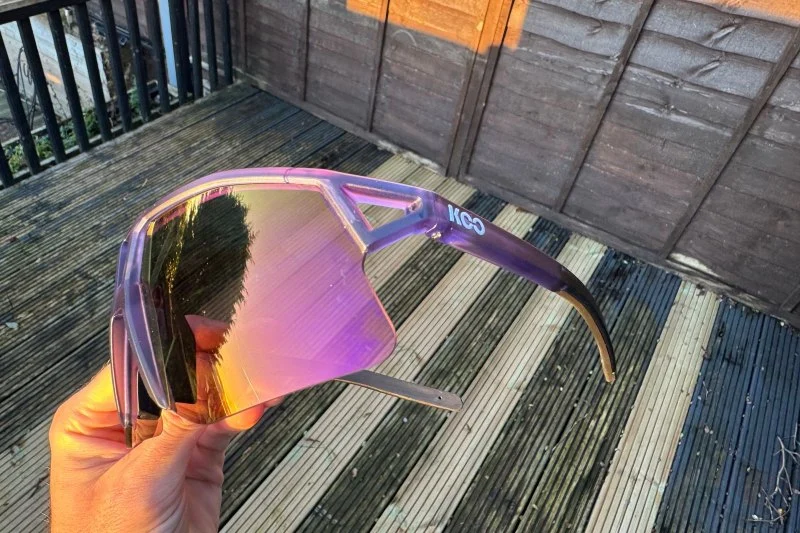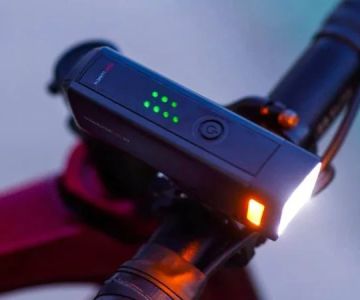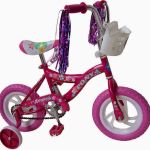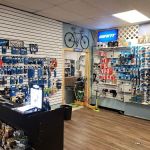
- why-cycling-glasses-fog-and-how-it-affects-performance
- selecting-the-right-cycling-glasses-to-prevent-fog
- practical-tips-to-stop-your-glasses-from-fogging
- real-rider-experiences-and-mistakes-to-avoid
- gear-and-products-that-actually-work
1. Why Cycling Glasses Fog and How It Affects Performance
Fogging in cycling glasses is a common frustration for riders of all levels. It usually occurs when warm, moist air from your breath or face meets the cooler surface of the lenses. This is especially noticeable during winter rides, long climbs, or when you stop briefly after a sweaty effort.
The fog itself might seem harmless, but it can severely impact your performance and safety. Riders have reported missing turns, slowing down mid-race, or even taking unnecessary breaks just to clean their glasses. Reduced visibility is more than a nuisance—it’s a hazard, especially on technical trails or crowded urban streets.
At Cycling Guider, we believe awareness is the first step toward prevention. Knowing the conditions that cause fog helps you make smarter decisions on gear and preparation.
2. Selecting the Right Cycling Glasses to Prevent Fog
Not all cycling glasses are built the same. Some are specifically engineered to combat fog with smart features and lens coatings. Choosing the right pair can drastically reduce frustration on the road or trail.
2.1 Look for Ventilation Design
High-performance cycling glasses often include vented lenses or frames that allow airflow behind the lens. This helps prevent moisture buildup, which is the root cause of fog. If your glasses feel sealed around your face, that could be part of the problem.
2.2 Anti-Fog Coatings and Hydrophobic Lenses
Some lenses come pre-treated with anti-fog coatings, which delay or prevent fog formation entirely. Others use hydrophobic technology to repel moisture. While not all budget models offer this, investing in a pair with these features pays off over time.
2.3 Adjustable Nose Pads and Fit
The closer the glasses sit to your skin, the more likely they’ll fog. Adjustable pads let you control airflow space and improve comfort at the same time. Avoid overly snug fits unless designed with proper ventilation in mind.
3. Practical Tips to Stop Your Glasses from Fogging
Aside from the gear itself, there are effective habits and tricks that cyclists can adopt to stay fog-free.
3.1 Clean Your Lenses Before Every Ride
Even minor dirt or oil buildup can trap moisture. Use a gentle lens cleaner or anti-fog spray to prep your glasses before each ride. Avoid fabric softeners or tissues, which can leave behind residue that worsens fogging.
3.2 Don’t Overdress—Regulate Your Body Heat
Excess layers cause your body to overheat, especially during intense climbs. That heat escapes through your collar and face, hitting your lenses. Wearing breathable layers and managing effort levels help regulate this effect.
3.3 Use Buffs or Face Masks Wisely
Face coverings that direct breath upward are a major contributor to fog. Tuck your mask under your chin when climbing or opt for versions with downward vents to avoid pushing air toward your glasses.
4. Real Rider Experiences and Mistakes to Avoid
Jake, an amateur rider from Birmingham, shared how he constantly battled fog during his first winter sportive. He blamed the glasses—until he realised his base layer was too warm and his helmet vents were blocked with a cap. A simple gear swap solved months of frustration.
Another cyclist, Maya from Edinburgh, had invested in a pair of top-end lenses but skipped the cleaning routine. Her lenses fogged during a cold morning commute, and she almost collided with a car at a roundabout. Now she keeps an anti-fog cloth in her saddlebag at all times.
These stories are reminders that fogging isn't just about the glasses—it’s about your entire ride setup and how you prepare for it.
5. Gear and Products That Actually Work
Not every anti-fog product lives up to the hype, but some are worth the investment. At Cycling Guider, we’ve tested a wide range of gear and can recommend items that consistently perform in UK cycling conditions.
5.1 Anti-Fog Sprays and Wipes
Reliable brands provide long-lasting protection—sometimes for multiple rides. Apply sparingly and always test before a race day. Single-use wipes are convenient but slightly less powerful than spray formulas.
5.2 Lens Inserts and Ventilation Aids
Innovative companies now offer small clip-in lens vents or anti-fog film inserts that improve airflow without compromising vision. They work well for riders with prescription cycling glasses, too.
5.3 Compatible Helmets and Eye Protection Combos
Some helmet brands design eyewear slots that optimise airflow and prevent glasses from fogging. Matching your helmet and glasses can create a more effective fog-resistant system overall.
If you’re ready to ride fog-free, Cycling Guider offers a curated range of cycling eyewear, anti-fog treatments, and breathable accessories tested by real riders in real conditions.







 Billet BMX5.0 (2 reviews)
Billet BMX5.0 (2 reviews) Far East Children Bicycle Factory1.0 (1 reviews)
Far East Children Bicycle Factory1.0 (1 reviews) Archer Motorsports, Inc.4.0 (8 reviews)
Archer Motorsports, Inc.4.0 (8 reviews) YEP Bike Works4.0 (55 reviews)
YEP Bike Works4.0 (55 reviews) Gorham Bike & Ski4.0 (498 reviews)
Gorham Bike & Ski4.0 (498 reviews) Alchemy Bikes4.0 (37 reviews)
Alchemy Bikes4.0 (37 reviews) How to Teach Kids to Ride a Bike: A Step-by-Step Guide for Parents
How to Teach Kids to Ride a Bike: A Step-by-Step Guide for Parents Tips for Riding on Busy City Streets: Smart Strategies for Urban Cyclists
Tips for Riding on Busy City Streets: Smart Strategies for Urban Cyclists Best US National Parks for Mountain Biking: Ride Epic Trails Across America
Best US National Parks for Mountain Biking: Ride Epic Trails Across America Best Aero Helmets for Time Trials and Racing
Best Aero Helmets for Time Trials and Racing How to Clean and Lubricate Your Bike Chain Like a Pro
How to Clean and Lubricate Your Bike Chain Like a Pro 10 Must-Have Items for Long-Distance Cycling Trips
10 Must-Have Items for Long-Distance Cycling Trips